Were All The Nephilim Giants Or Men Of Renown?
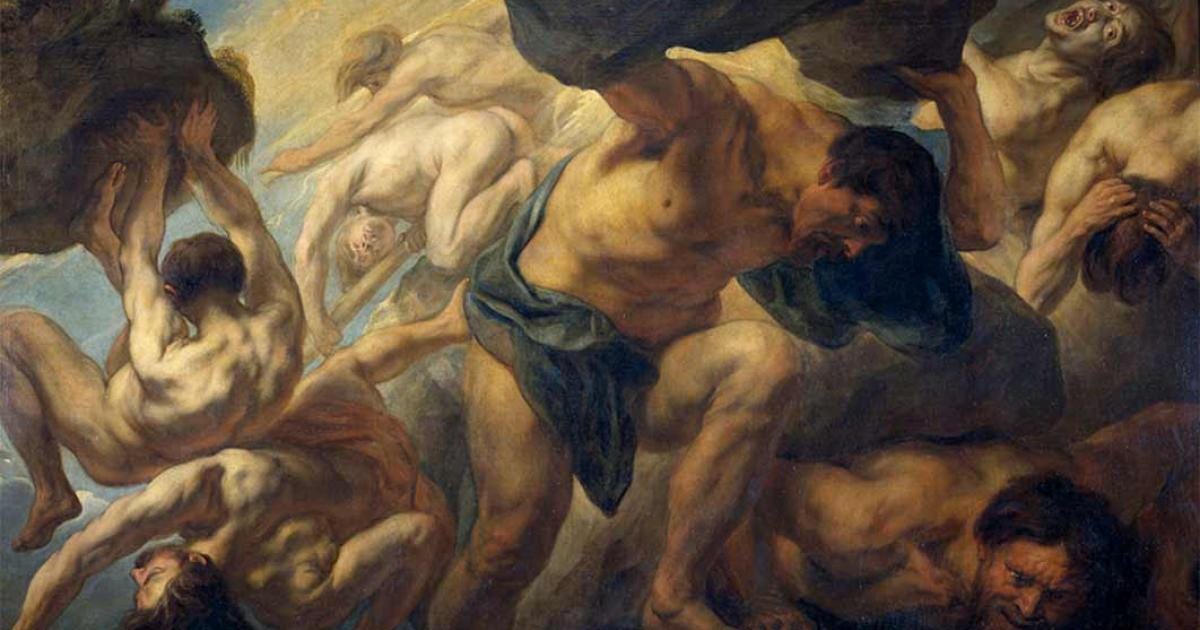
The Nephilim—beings so powerful and extraordinary that their very existence has sparked millennia of debate, fear, and fascination. Were these legendary figures the towering giants of popular imagination, striding across antediluvian landscapes like living mountains? Or were they something far more complex—a diverse brotherhood of god-born heroes whose true nature has been obscured by centuries of mistranslation and mythological conflation? From the forbidden unions described in Genesis to the epic halls of Mesopotamian kings, from the legendary Gilgamesh to the god-emperor Naram-Sin, the trail of the Nephilim winds through humanity’s oldest stories, challenging everything we think we know about these “men of renown” who once walked among mortals as living bridges between heaven and earth.
More Than Giants
It is often assumed that the biblical ‘Nephilim’ were all Giants. The Nephilim, however, entail much more and can be traced back to a much richer tradition found in ancient Mesopotamia about the Scions of the Gods, with the Giants only having been one group amongst them. The Giants and their companion groups (collectively referred to as the Shining Ones) were followers of a ruling dynasty of the same descent who counted among their number the greatest of Sumerian heroes. Later, the great Akkadian god-kings were also regarded as Scions of the Gods.
Some of the most well-known and intriguing beings of Hebrew tradition are the Nephilim. The Nephilim feature in the biblical Book of Genesis where they are mentioned against the backdrop of the wickedness of the people in the age before the deluge. They are also mentioned in another biblical book, the Book of Numbers, where the Israelite scouts saw them in the land of Canaan before the Israelite conquest.
In popular understanding, the Nephilim are often equated with Giants. The reason for this is that some Bible translations, following the Septuagint, have interpreted the word, Nephilim, to mean Giants. This reading has resulted in many other stories and proposed evidence of Giants all across the world to have been identified with the biblical Nephilim. But is this correct? A closer look at the Nephilim themselves is in order to be able to answer this question.
As the term Nephilim is taken from biblical tradition this can be a starting point. Once the biblical use of the term is investigated, one could proceed to try and establish the origins for this tradition, which may lead back to the ancient land of Sumer and Akkad in southern Mesopotamia. Hopefully this most ancient of traditions would cast some light on the question regarding the identity of the Nephilim and as to whether they were in fact Giants.
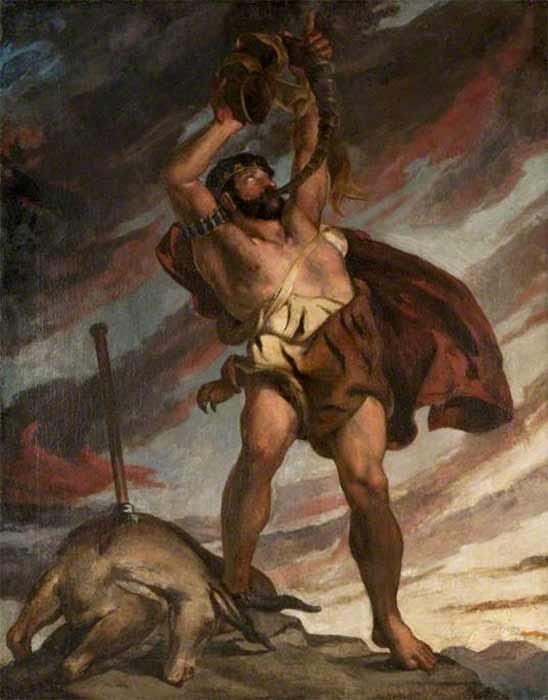
The Biblical Nephilim
It may come as a surprise to some to discover and realize that the Nephilim are not described as Giants in the Book of Genesis, where they are for the first time referred to. They are the scions of the Sons of God and the daughters of men and are portrayed as great heroes, as men of old who became known for their great heroic deeds, so-called “men of renown”.
In the Book of Genesis, Chapter 6, one reads:
“There were Nephilim on the earth in those days, and also afterward, when the sons of God came into the daughters of men and they bore children to them. Those were the mighty men who were of old, men of renown.”
As for the meaning of the name, ‘Nephilim’, it also does not necessarily mean to be Giants even though this may be one possible meaning. Nephilim is the plural of Nâphal, derived from the root “to fall” and have been taken to mean “feller”, “bully”, “tyrant” or “giant” by certain scholars and experts and “the fallen ones” or “ones who have fallen” by others. According to the latter opinion the Nephilim were the scions of fallen angels fathered with human girls. In this instance, the Sons of God who fathered the Nephilim are understood as fallen angels, in keeping with the Sons of God being the Hebrew equivalent of the Canaanite term, Sons of El, found in many places throughout the Ugarit texts and which refers to celestial beings.
What is particularly important to observe is that the term, Sons of God, found in biblical tradition, is simply another expression for the gods. Within ancient tradition the scions of the Sons of God would thus translate to Scions of the Gods. And this seems to be the bottom line, the Nephilim were ancient beings who were believed to have been descended from the gods, in other words Scions of the Gods.
The identification of the Nephilim with Giants follows from another biblical passage, namely one found in the Book of Numbers, Chapter 13, where one reads how the Hebrew spies encountered Giants who are identified as Nephilim, in the land of Canaan:
“There we saw the Nephilim (the descendants of Anak came from the giants [gibbôr]); and we were like grasshoppers in our own sight, and so we were in their sight.”
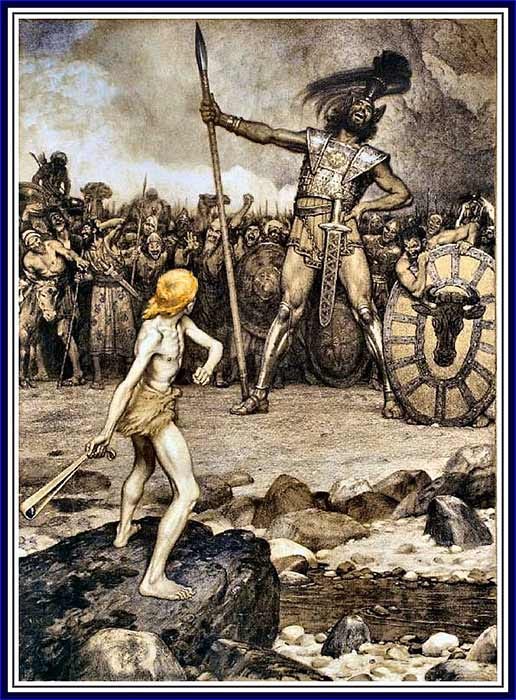
In this instance, the Nephilim found in Canaan are indeed described as Giants. Although the Hebrew word, gibbôr, translated as Giants, could also mean “powerful”, “warrior”, “tyrant” and “champion”, the context suggests that they were indeed regarded as Giants, as the Hebrew spies appeared to be like “grasshoppers” in comparison with them. Elsewhere in another passage the Anakim are also identified as Rephaim, another term used to refer to Giants. The Rephaim, however, constitute another topic altogether and one for another day.
The question remains whether all Nephilim were Giants. All Nephilim seems to have been heroes, mighty men and powerful warriors but were they all necessarily Giants? This is a very intriguing and important question which could only be answered if one consults the earlier Middle Eastern traditions from which the biblical tradition originated. Ancient Middle Eastern tradition can provide reference to these very same Scions of the Gods, who were also sometimes described as Giants, in the early Sumerian texts.
Origins Of The Nephilim Tradition
There could be no doubt that the biblical Nephilim belong to an ancient Middle Eastern tradition about such beings. The reference to “men of renown” who lived in the land of Shinar (Sumer) before and after the deluge immediately brings Gilgamesh, that great and well-known Sumerian hero of the Gilgamesh Epic, to mind.

In extra-biblical Hebrew tradition, Gilgamesh has indeed been counted among the Giants as written in the Book of Giants found among the Dead Sea Scrolls. Gilgamesh could in fact be seen as the archetypal Nephilim hero insofar as the Sumerian tradition about him closely mirrors what one reads about the Nephilim in the Book of Genesis.
According to the Sumerian King List, Gilgamesh belonged to the dynasty founded by Meskiagkasher, a scion of the sun god, Utu. This means that this Sumerian dynasty, the very first one to rule over ancient Sumer, was regarded as scions of the sun god, Utu, and thus of the great gods of ancient Sumer. As such, they could be regarded as Nephilim (if this term is used to describe such beings in all traditions). Some members of this dynasty, like Gilgamesh for instance, were in fact also portrayed as Giants in ancient Sumerian texts.
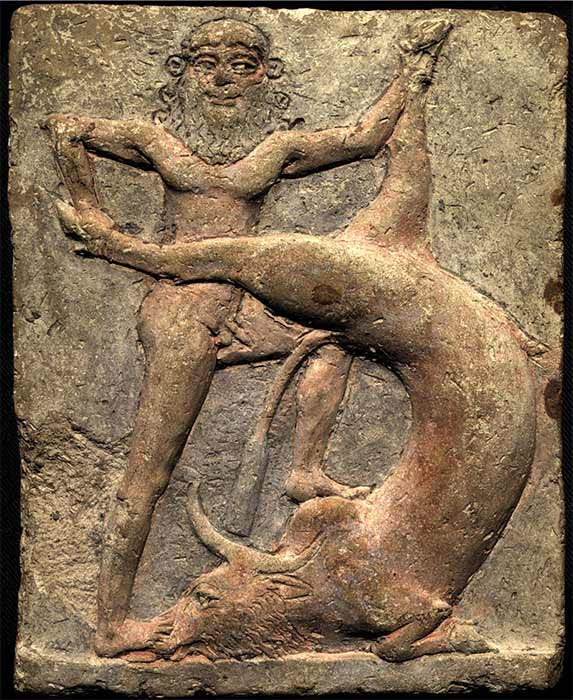
What is, however, quite intriguing is that the descent of this dynasty from Utu could also be viewed in another way. It could very well be that this view evolved from an even more primeval way of understanding these matters, namely from the idea represented by the symbol U or Ud (deified U), a symbol for a word meaning “shining”. This reading follows from the fact that the name, Utu, was also derived from the word, Ud. A similar development took place in Egypt where very similar ideas, apparently going back to the Predynastic Period, are to be found in the Edfu texts.
In ancient Sumerian literature a group called the Us, the Shining Ones, even exist. Scholars have variously taken them to be “spirits”, “hemi-daemons” and “deceased forebears”. They should perhaps be regarded as daemons that in some strange way possessed or were incarnated in certain individuals. Three such groups could be distinguished, namely those associated with building work, the warriors and the seven sages. It is especially among those Us who were builders, but also among the warriors, that one first comes across the Giants. They were called U.gal, the huge Shining Ones. They are the earliest known figures in history who could be associated not only with traditions about Giants but also with the Nephilim.
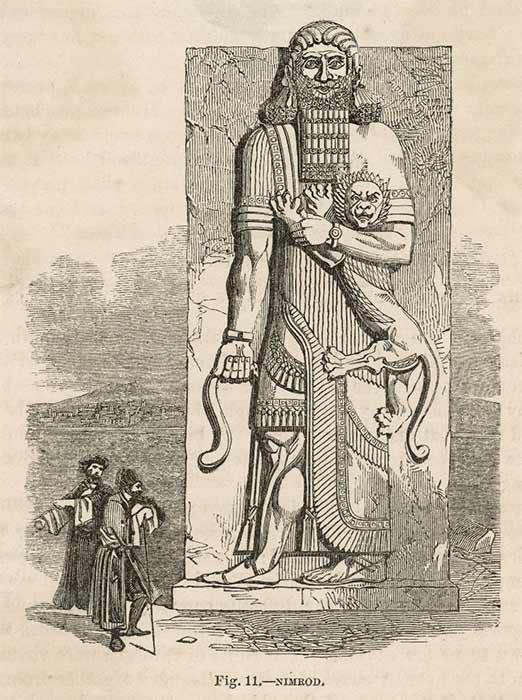
Significant to the current discussion about these beings, these Shining Ones, is that they were not all counted as Giants. In fact, the additional symbol gal which means “great” or “large” was used to distinguish them from the others.
What is interesting about the different groups of Shining Ones is that they were associated with various members of the first House of Uruk, of the dynasty of Meskiagkasher, rulers like Enmerkar, Lugalbanda, Dumuzi and Gilgamesh. As argued by this author in The Nephilim, Kings of an Epic Age: Secrets and Enigmas of the Sumerians and Akkadians, these beings were later organized into a caste system which had its origin in Uruk in the time of Gilgamesh. In this way they all served the king, who belonged to the principal ruling Nephilim dynasty.
The Shining Ones As Fallen Ones
The three groups of Shining Ones have an exact equivalent in Egyptian tradition, where one identifies them as the “Children of Tanen”, described in the Edfu texts and said to have migrated from their original homeland to Egypt in Predynastic times. After rebuilding their homeland after a great deluge submerged it, they came to Egypt in the time before the first temples were built.
These Children of Tanen consisted of three groups of beings, namely the warriors (called Shebtiw), the “builder gods” and the seven sages and could be identified with a group called the Shining Ones, the Followers of Horus, in Egyptian tradition. They were linked to a dynasty of gods who once ruled in their original homeland, a dynasty that corresponds remarkably and strikingly well with the first House of Uruk of Mesopotamian tradition.
What is quite fascinating about the Egyptian version of the Shining Ones is that they were regarded as descendants of an even earlier group from the period before the deluge who were envisioned and regarded as seed of the earth-god that had fallen on the earth. The wording in the texts suggests that these fallen seed were linked with the idea of castration even though it is not clear which god would have been castrated.
The Sumerians had a similar tradition about seed of the god, Enki, Lord of the Earth/Land, that had fallen on the earth. Apparently, the Shining Ones were the descendants of these fallen “seed”, who were apparently fallen gods. This would explain why the biblical Nephilim were called “fallen ones”.
A similar tradition was also found among the Hurrians, another people present in ancient Mesopotamia since at least the Akkadian Period, during the second part of the third millennium BC. Later, it spread to the Greek world, where one finds that the Gigantes, the Giants, were born from the blood of the castrated Uranos that fell on the earth.
The tradition about the Greek Giants could be tracked all the way back to early Sumerian and Egyptian traditions about the Shining Ones, born from the fallen seed. In the Sumerian tradition some amongst them, found among the builder and warrior orders, were regarded as “big” Shining Ones. In ancient Egyptian tradition, they correspond with the builder gods and Shebtiw. They were the earliest known Giants among the Nephilim to be found in any literary traditions from all across the world.
A Nephilim Messiah
What is moreover especially significant is that the Shining Ones were not only intimately linked with a Sumerian ruling dynasty of the same descent (as Scions of the Gods) but that this dynasty was also viewed in messianic terms. The Sumerians had an extensive speculative theology about these matters, a theology which goes back to shamanistic origins in the northern Zagros Mountains. They recast the shamanistic experience in the context of society where the divine was thought to have become manifested or incarnated as messianic figures. Gilgamesh was such a figure, regarded as two-thirds god.
These concepts were later taken over by the great Akkadian god-kings who ruled over the land of Sumer and Akkad from 2370 to 2190 BC. Sargon the Great, founder of the Akkadian Empire, was viewed as a new incarnation of Dumuzi who returned to this world, in fact, as a second Gilgamesh. With this dynasty, the Nephilim of old have thus returned to rule. And their rule was even more brilliant and exceptional than the earliest Urukite rulers who had built Uruk and the great monuments in the city. In fact, the extent of the Akkadian Empire reached as far as the ends of the known world. In later Mesopotamian history, this Empire and its greatest Emperors were regarded as the absolute ideal and model for true greatness.
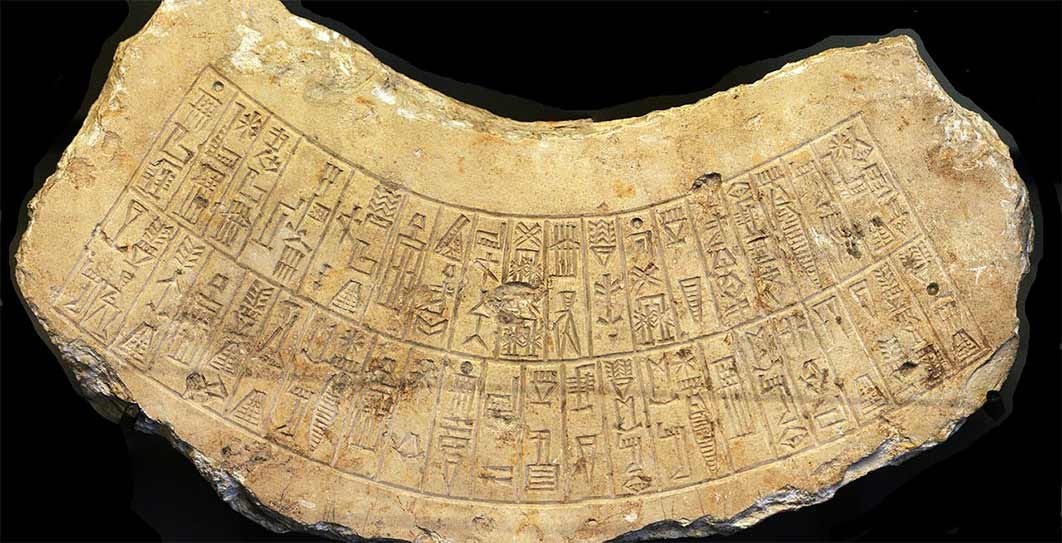
Sargon the Great’s son or grandson, Naram-Sin, was the first known person to be worshipped as a god, actually as having been one of the great gods, during his own lifetime! A temple was even erected for the god, Naram-Sin, in the capital city, Akkad, with an entire priestly cast dedicated to his worship. With the god, Naram-Sin, the Nephilim reached the pinnacle of greatness.
Sargon’s daughter, Enheduanna, was also a very exceptional woman. She wrote beautiful poems in honor of the goddess, Inana, one of which served as a cult song in the Akkadian imperial cult, a cult in which the deified messianic god-kings took centre stage. In many ways this imperial cult could be regarded as the “Church of the Nephilim”. This cult would continue to exist for centuries and even millennia to come.
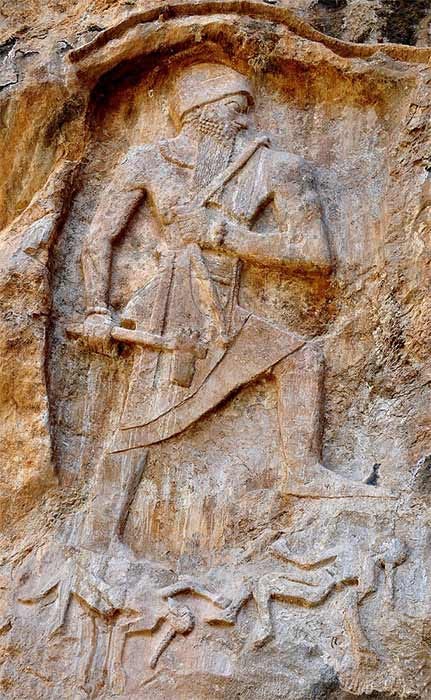
Kings Of An Epic Age
Like the earlier Sumerian heroes, the Akkadian god-kings were remembered as the greatest of heroes. And like the Sumerian rulers, they were regarded as Scions of the Gods. In the same way as the Gesta Urukaeorum, the legends of the kings of Uruk, a powerful epic tradition developed around these great Emperors, called the Gesta Akkadaeorum, the legends of the kings of Akkad. What is quite remarkable is that even the story told in the Gilgamesh Epic took most of its motifs and themes from the lives of the great Akkadian god-kings, Sargon and Naram-Sin. There could be no doubt that the Akkadian epic tradition is comparable to the heroic Homeric tradition about Troy.
Among the enemies subdued in a titanic battle by Naram-Sin according to the epic tales about him was the Ugallu. They were cast in terms of an invading horde who invaded from the west and north and overran Mesopotamia but were defeated and expelled by Naram-Sin. The stories go back to real events often described as the Great Revolt against Naram-Sin, after which he was honored and worshipped as the god of Akkad by the people of Mesopotamia.
The name Ugallu is derived from the U.gal mentioned earlier and they would certainly have been viewed in exactly the same terms, as Giants. It seems that after they were subdued and incorporated into the Akkadian military order, they became associated with the same sacred place as the earlier U.gal, namely the Nergal sanctuary in Kutha (Nergal was the god of the Netherworld). The traditions about the Giants later found in Canaan and the Mediterranean Basin could be tracked back to these early forerunners and the traditions about them.
What one encounters in early Sumerian and Akkadian history and tradition is a Great Epic Age in many ways unequalled in its scope and impact on later tradition. These rulers achieved deeds of outstanding greatness taken up in the songs of poets and bards, giving rise to a magnificent epic tradition. They belonged to an ancient tradition of descent from the gods, going back to the earliest traditions of the Shining Ones. Their story spread from Mesopotamia to Egypt, Persia, India and Canaan, where these great heroes, heroes like Gilgamesh, were called the Nephilim by the Israelites.
The tradition about the Scions of the Gods, or Nephilim, was intimately linked with Giants since the earliest times when these traditions appeared in Sumerian texts. In accordance with the ancient Sumerians identifying them with certain daemons, they were called big Shining Ones. In the Akkadian traditions they appear as a mighty invading horde associated with similar daemons, then called Ugallu.
But all Nephilim were not Giants. Even though the principal Nephilim dynasties, according to tradition, did in fact include Giants in their midst, Giants like Gilgamesh, others were not Giants. The great Akkadian god-kings, like Sargon the Great and Naram-Sin, were not Giants. But they were exceptionally powerful Emperors, and beings portrayed as Giants did serve them as both warriors and builders.
To conclude, what one finds in this earliest of traditions, in the ancient texts of Sumer and Akkad, is that although the tradition of the Giants is intimately linked with this tradition, all the Nephilim were not Giants. They were, however, great heroes, “men of renown”.
Dr Willem McLoud is an independent South African scholar whose main interests are ancient Middle Eastern studies, Kantian philosophy and philosophy of science. Willem’s main areas of study regarding the ancient Middle East are the Sumerian, Akkadian and early Egyptian civilizations, with special focus on the Uruk and Akkadian Periods in Mesopotamian history as well as the Old Kingdom Period in Egyptian history. He is the author of The Nephilim: Kings of an Epic Age: Secrets and Enigmas of the Sumerians and Akkadians
Top Image: Fall of the Titans”. Oil on canvas by Jacob Jordaens, (1638) (Public Domain)
References
McLoud, W. 2021. Kings of an Epic Age. Barto (PA): Creative Texts.


Especially very tall people.
Brilliant being the operative word